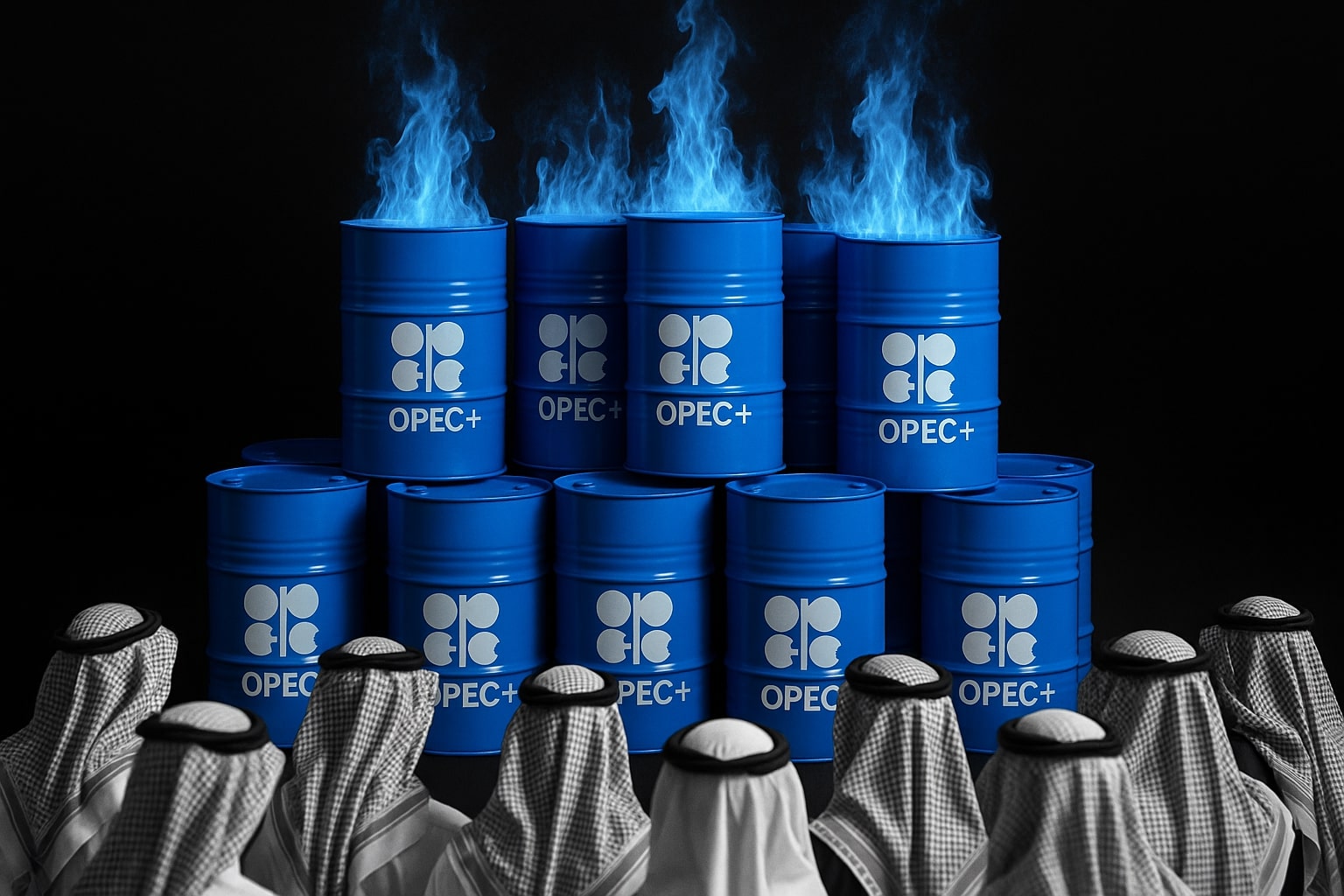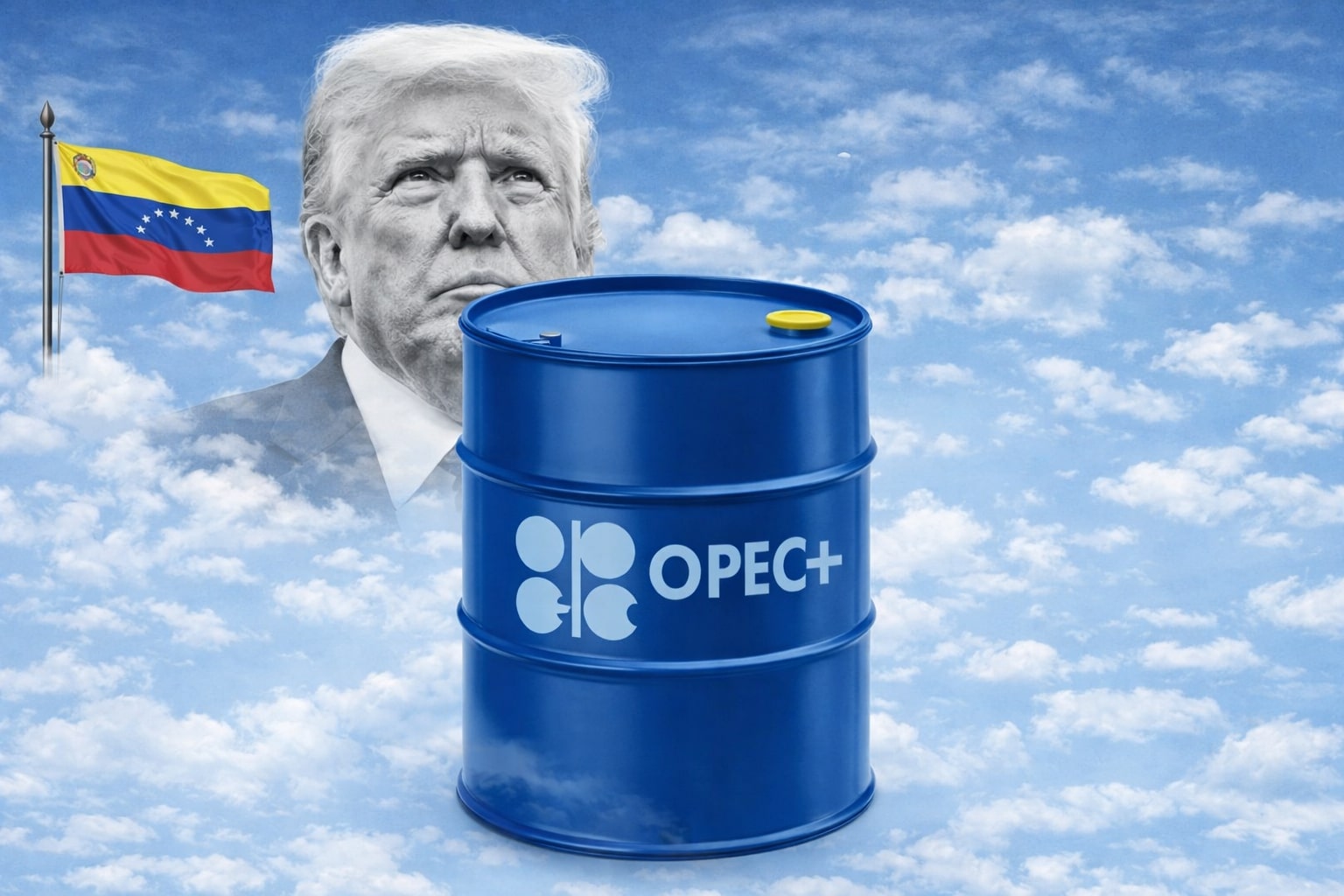
Oil Price Forecast - WTI Drops to $59.78, Brent Holds $63.67 as Oil Glut Deepens and Diesel Cracks Surge
Record floating storage, a 5.2M-barrel U.S. crude build, and Saudi Aramco’s price cut weigh on sentiment, while Russia’s export decline and China’s 8.2% import surge highlight a fragile balance in global oil markets | That's TradingNEWS
WTI (CL=F) and Brent (BZ=F): Supply Overhang and Record Floating Storage Pressure the Market
Spot Tape and Key Resistance Zones
WTI (CL=F) trades at $59.78 (+0.59%), while Brent (BZ=F) holds near $63.67 (+0.46%). Murban trades higher at $65.84 (+0.84%), with Louisiana Light at $62.79 (-0.10%), Mars US at $70.71 (-1.34%), and Bonny Light at $78.62 (-2.84%). The OPEC Basket stands at $65.51 (+0.12%).
Gasoline RBOB hovers at $1.953/gal (-0.63%), while Natural Gas prices dip to $4.332/mmBtu (-0.57%).
Technically, WTI (CL=F) faces resistance at $62, near its 50-day EMA, and remains heavy below that mark. Support lies at $56, marking the next significant floor. Brent (BZ=F) mirrors this with resistance between $64.80–$65.50 and a support range near $61.50–$60.00.
Inventory Data and Supply Glut Signals
The EIA reported a +5.2 million barrel build in crude inventories for the week ending October 28, adding to bearish sentiment. Simultaneously, global oil in floating storage has surged to a record high.
Sanctions on Russia and Iran, plus additional Middle East cargoes, have pushed oil “on water” volumes to unprecedented levels. Traders note that if sanctions were lifted, the market would be significantly oversupplied, potentially driving WTI below $56 and Brent under $60 in short order.
Refined Product Tension: Diesel Cracks Surge
While crude prices weaken, refined products tell a different story. European ICE gasoil cracks hit 21-month highs, with premiums exceeding $34–$40 per barrel versus Brent.
Drone attacks on Russian refineries, maintenance shutdowns, and EU sanctions on buyers of Russian oil have cut supply sharply.
In the U.S., Midwest ULSD stocks dropped 1.4 million barrels, and gasoline inventories declined 4.7 million barrels, creating tighter product balances.
Retail prices are rising even as crude falls — Hungary’s fuel prices rose +4 HUF for petrol and +8 HUF for diesel, showing that crack spreads, not crude alone, dictate pump behavior.
OPEC+ Strategy and Saudi Aramco’s Pricing Cut
Saudi Aramco cut its Arab Light OSP to Asia by $1.20/bbl, now just +$1.00/bbl over Oman/Dubai benchmarks. This confirms weaker demand from refiners and the kingdom’s focus on defending market share over price.
OPEC+ signaling remains soft; verbal interventions have failed to lift Brent beyond $65, while the record floating storage acts as a ceiling. The group’s credibility as a stabilizer continues to erode.
Russia and Sanction Dynamics
Russian diesel exports dropped another 4% in October to 2.4 million tonnes, with exports to Brazil plunging 73% to 74,000 tonnes.
Despite infrastructure damage like the Tuapse refinery shutdown, the global market has absorbed the losses through shadow fleet rerouting and floating storage, which neutralize supply shocks.
The paradox: crude remains heavy, while diesel cracks stay inflated — creating a market split between oversupply of raw crude and shortage of refined fuels.
Demand Side: Jet Fuel, Macro Risks, and FAO Correlation
The FAA’s flight restrictions across 40 U.S. airports cut approximately 160,000 barrels/day in jet fuel demand from Nov 7–14. Combined with the U.S. government shutdown and a stronger U.S. dollar, risk aversion is rising.
On a broader scale, lower crude prices have even influenced global food indices — the FAO Sugar Index fell 5.3% partly due to reduced oil-linked ethanol demand.
The demand picture remains fragile, signaling that WTI’s $62 ceiling and Brent’s $65 ceiling will hold unless macro conditions improve.
Asian Buying and ADNOC’s Expansion
China’s crude imports jumped 8.2% YoY to 11.4 million bpd, driven by stronger refinery margins and restocking ahead of year-end.
Meanwhile, ADNOC’s $14.7 billion local contracts reinforce supply chain strength. Since 2018, its In-Country Value program has injected $65.9 billion into the UAE economy, with plans for another $54 billion expansion.
This combination — robust Asian intake and Gulf investment — ensures ample long-term supply, limiting Brent’s upside risk.
Geopolitical Variables: Venezuela and Lukoil Deal Halt
U.S. pressure on Venezuela has added short-term risk premium to heavy crude markets, but the effect is muted by Lukoil asset sales freezing and Gunvor’s withdrawal from a $20 billion purchase.
These moves, alongside potential CEE sanction exemptions, increase regional imbalance but haven’t translated to a global squeeze yet. The result: headline volatility, not a sustained rally.
Technical Picture for CL=F and BZ=F
For WTI (CL=F), resistance is concentrated at $61.80–$62.50, then $64.20. Support rests near $58.80–$59.20, and a break below that opens $56.00.
For Brent (BZ=F), resistance lies at $64.80–$65.50, while $61.50–$60.00 acts as the key floor.
Momentum remains bearish with compressed time spreads and elevated storage levels, suggesting limited upside near-term.
Crack Spread Implications and Retail Pass-Through
The $34–$40 per barrel diesel crack incentivizes refiners to maintain high distillate output, especially as RBOB margins lag.
This is reflected in consumer prices — Hungary’s retail increases despite falling crude show how refinery yield economics overpower upstream softness.
Expect continued divergence between crude and refined product trends through November.
Read More
-
Broadcom Stock Price Forecast AVGO Stock Sinks to $324 After $414 Peak – Is $390 the Next Target?
17.12.2025 · TradingNEWS ArchiveStocks
-
XRP Price Forecast: Can XRP-USD Price $1.64 Hold Before a Run Toward $2.50–$3.00?
17.12.2025 · TradingNEWS ArchiveCrypto
-
Oil Price Forecast: WTI at $56 and Brent at $60 as Trump’s Venezuela Blockade Collides With 20% Yearly Slide
17.12.2025 · TradingNEWS ArchiveCommodities
-
Stock Market Today: Dow Outperforms at 48,271 While S&P 500 and Nasdaq Slide on Oracle AI Debt Fears
17.12.2025 · TradingNEWS ArchiveMarkets
-
GBP/USD Price Forecast - Pound Under Pressure as Softer UK CPI Drags Cable Back Toward 1.33
17.12.2025 · TradingNEWS ArchiveForex
Freight, Curves, and Storage Economics
Record floating storage volumes and strong freight rates on Aframax and Suezmax routes are flattening Brent time spreads, reducing roll yield for long positions.
Carry trades remain attractive for physical holders but less so for paper longs, limiting speculative inflows into front-month futures.
Potential Market Triggers
Bullish catalysts:
-
Sustained Russian export disruption beyond current levels.
-
Sharp drawdowns in EIA data reversing the +5.2M build.
-
U.S. or OPEC+ policy shock reducing supply flow.
Bearish drivers: -
Rising inventory builds,
-
Stronger USD,
-
Expanding storage volumes,
-
Demand erosion from aviation or manufacturing slowdown.
Market Positioning and Outlook
Current positioning favors short-term selling into rallies near $62 WTI / $65 Brent, with tactical covers near $56 / $60 respectively.
Refiner margins outperform producers, and distillate demand strength continues to cushion refiners from crude volatility.
Until inventory trends shift materially or sanctions escalate, range trading dominates.
Verdict: WTI (CL=F) and Brent (BZ=F) – HOLD With Bearish Tilt
With WTI near $59–60 and Brent around $63–64, fundamentals remain supply-heavy:
– EIA builds of +5.2M barrels
– Record floating storage levels
– Diesel cracks exceeding $34–$40/bbl
– OSP cuts from Saudi Arabia
– Weak jet demand and strong USD
The short-term stance is neutral-to-bearish: fade rallies into resistance, accumulate covers at deep supports.
Final stance: HOLD, with tactical short bias until confirmed multi-week draws or severe export disruptions shift momentum.



















